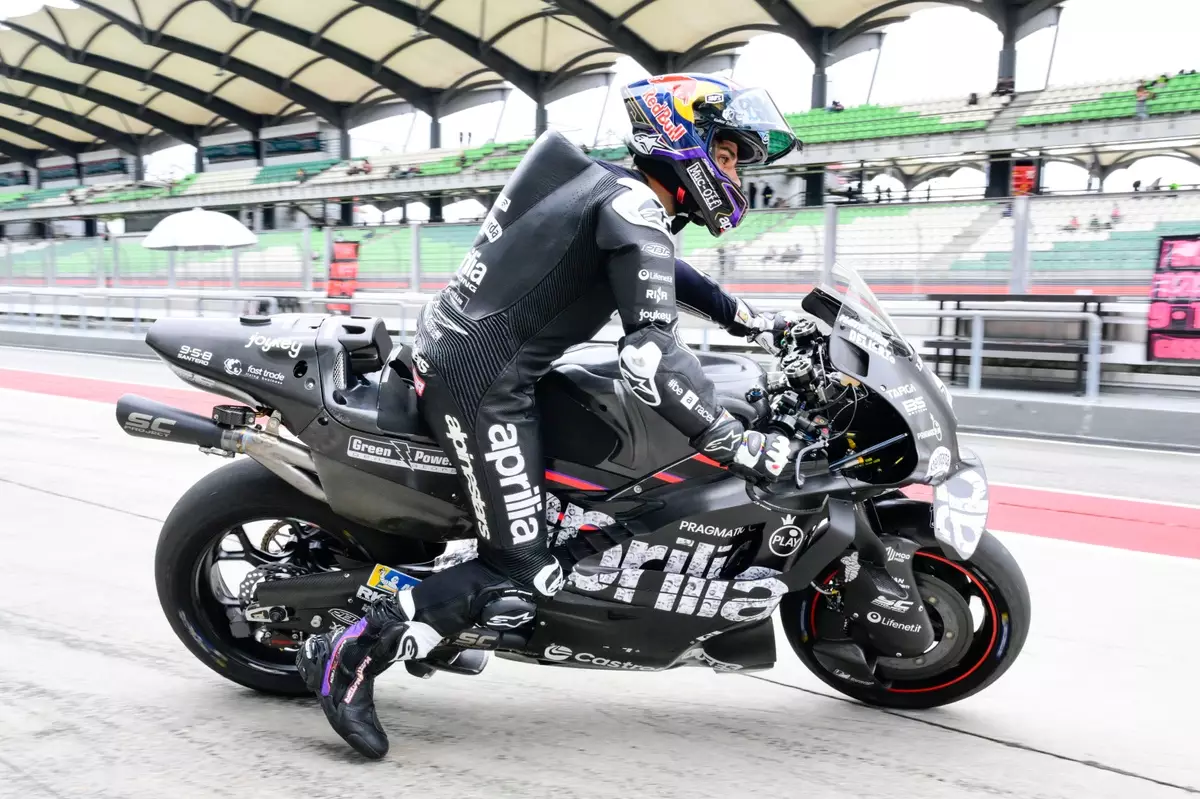The MotoGP pre-season testing session held in Sepang, Malaysia, took an alarming turn when reigning world champion Jorge Martin experienced a severe crash. The event raised significant concerns regarding rider safety in the high-speed world of motorcycle racing. Martin’s fall, marked by a harrowing highside maneuver, resulted in him landing face down with considerable force. This incident has spotlighted the ongoing conversation about tire safety and performance, as well as the accountability of manufacturers like Michelin, which has a prominent role in the sport.
Michelin’s Explanation Under Scrutiny
In the aftermath of the crash, Michelin provided an initial analysis indicating that a sensor had detected a notable drop in tire temperature—15 degrees Celsius below the expected threshold—just prior to Martin’s incident. This statement, intended to offer a technical rationale for the crash, was met with skepticism by Aprilia, the team that Martin rides for. Aprilia’s motorsport director, Massimo Rivola, has expressed his dissatisfaction with Michelin’s findings, seeking to emphasize that the data they collected suggests no issues with the motorcycle itself and that Martin did not make any mistakes during the ride.
Aprilia’s call for a thorough examination of the tire’s condition—including questions about its storage history over the past 11 months—speaks to the wider concern regarding the performance of racing tires. If the tires are not up to standard, the implications for rider safety become glaringly obvious. As Rivola articulated, the focus ought to be on the safety of the riders; thus, he has urged Michelin to convene all teams to comprehensively address the situation.
Martin sustained serious injuries due to the crash. He suffered a single fracture to his right hand, alongside multiple fractures in his left foot, leading to a swift evacuation to a hospital near Sepang. Post-incident, Martin underwent surgery on his right hand, performed by the esteemed Dr. Xavier Mir at the Quiron Dexeus Clinic in Barcelona. Thankfully, the operation was successful, and early indications show that recovery will commence shortly.
The repercussions of Martin’s injuries extend beyond the individual level, affecting team dynamics and race strategies as well. Both Martin and his teammate Raul Fernandez—also an Aprilia rider—are provisionally listed to participate in the upcoming test at Buriram. However, Martin’s recovery status, still in flux as outlined by Aprilia’s comments, adds an air of uncertainty to his participation. Injuries regarded as minor or treated quickly in the world of sports can still ripple through plans at a team and series level.
The incident has prompted deeper discussions on the subject of safety in motorcycle racing. With a notable rise in the number of injuries observed in recent seasons, Rivola’s insistence on safety as the paramount concern rings true. The MotoGP community must embrace the necessity for collective responsibility. Manufacturers, teams, and regulatory bodies must engage in open dialogue regarding tire technology, safety protocols, and the experiences of riders, especially after traumatic incidents.
Rider safety is not just the responsibility of any single entity; instead, it requires an amalgamation of efforts to ensure optimal conditions on the track. As the sport prepares to embark on another season, it is crucial that stakeholders, manufacturers, and teams collaborate to forge ahead with solutions that safeguard riders and maintain the integrity of the sport.
The high-profile crash of Jorge Martin serves as a stern reminder of the inherent dangers associated with motorcycle racing. It also highlights the pressing need for transparency and accountability from tire manufacturers like Michelin. As Aprilia calls for comprehensive discussions, the MotoGP community must rally together to augment safety measures and ensure that the athletes can race with confidence, knowing that their wellbeing remains the priority.


Leave a Reply